Teachers Struggle to Decrease Copies
Despite being a 1:1 school, Dominion still spends tens of thousands of dollars a year on paper for copies.
With the introduction of the Chromebooks in every student’s hands this year, many classes are starting to transfer to mostly online. Thus, the idea is that students are having fewer and fewer papers given to them, and fewer copies printed out. Also, the expectation being that with the Chromebooks taking over the role of paper in many classes, the cost of paper and copies that the school is spending on each year will decrease.
Still, this is not the reality, as many teachers are still making many copies which is costing the school a lot of money. Out of the top 100 teachers who made copies, according to badge logins, in October there were 441,046 copies made. November, with days off for Thanksgiving, saw that number decrease to 368,516 copies. With time off for Winter Break, a total of 246,430 copies were made in December. That makes a total of 1,055,992 copies made in just three months.
These copies are costing the school a lot of money. Dominion orders 60 cases of standard sized white paper, costing the school $1,590 every month from August through May. Dominion also orders 18 cases of standard size colored paper, costing the school $2,220 every three months. By the end of the year, the total cost of the paper used at Dominion adds up to $20,970 for a whole year, according to bookkeeper Anne Beltrane.
A large number of paper being used in the classrooms is seen the most in math classrooms. As, the top ten teachers who made the most copies in November and December, 60% of them were math teachers. The top copier was the Titan Depot each month, the copy service in L617 that serves all teachers in the school.
Despite the still high number of copies being made, there still seems to be a more paperless change coming. Ms. Eastman, Dominion’s IFT, said, “I live in a copy room though, and it’s more likely that teachers are on their computers and working with me than running the machine.”
Teachers are frustrated when it comes to improving the math department’s experience using the Chromebooks. Math Department chair Ms. Sokol said, “The county has been slow to make sure that all the students have access to the [online] textbooks. We haven’t received a whole lot of guidance on how to use all these electronic textbooks.”
This has resulted in the high number of copies made, including the difficulty of switching teaching practices. Sokol explained, “When you’re used to doing things one way, and there’s something completely different. It takes a while to get comfortable to try to shift over.”
This uncomfortable feeling with the Chromebooks seems to be a problem which is holding teachers back. Assistant principal Mrs. Vereb said, “That’s the struggle with technology is a lot of times as teachers, who are learning alongside the students, and sometimes the students can be ahead of us in terms of technology, and that can you be a little bit vulnerable.”
Getting teachers comfortable and used to working with the Chromebooks training started at the end of last year. Vereb said, “Ms. Eastman provides ongoing professional development to teach teachers how to better integrate technology into the classroom, [so] that we can essentially read students better [in order to] reach our learning goals in technology.”
This training has continued throughout the school year, as Sokol explained, “Ms. Eastman is giving us some training, she gave us some training on how to use the exit tickets and stuff like that. It’s just kind of trial and error, we’ve had a little bit of formal training and a lot of figure [it] out as you go.”
Eastman expressed the work that the math department has been doing to make use of the Chromebooks and use less paper. She said, “They specifically invited me to a department meeting to present a mini-lesson on how to use tech once a block in ten minutes or less for bell ringers and exit tickets. Ms. Sokol was flipping her classroom before quarter one interims; Ms. Dufour has tested the pros and cons of the Equatio extension; Ms. Kostkan sat with me to design exit tickets that act as pulse-checks for students’ comfort with the day’s tasks to promote a safe and secure learning environment.”

Still, the many of the math teachers expressed the need for math to be written out on paper. Ms. Kaplan said, “Just like a football team needs a field to practice math needs paper to write on math is just by nature, a subject where we need to use paper, people need to practice it.”
Ms. Bradley expressed a similar concern, “I use copiers because it is so much easier to write on a piece of paper a math problem rather than typing a math problem without the symbols that we use.” Ms. Carter also said, “It’s really difficult for kids to do math on the Chromebook and have it recorded correctly.”
Sokol explained there is a solution of this by the use of a program called Equatio, she said, “You can either write mathematically, or you can map type math equations in there. And so it’ll turn your handwriting recognition into an equation.”
Besides the math department, there are other teachers who make a lot of copies. History teacher Ms. Marnell said, “We need [to] use whatever resources are available and we need to use the best resources available. Some of those resources are in print, and so copies are needed.” She also described the positive effects of using paper, “We also find that research supports that kids who hand write and do writing exercises tend to do better academically.”
Science chair Mr. George said of the struggle of working on Chromebooks, “In science classrooms, if students are working in the lab area on a lab activity, there is not enough room for 30 Chromebooks to be in the area and it could lead to lab safety issues.”
“The technology is exciting to use. I have seen some great instructional practices going on in classrooms. Its much like the Promethean Boards. It took a while but now teachers use them all the time. Textbooks continue to be an issue. Connecting them to the technology is far more complicated than most people anticipated,” history chair Steve Hicks said.
With the introduction of the Chromebooks into the hands of Dominion students, the school has made goals concerning the use of these Chromebooks. Vereb explained, “Dr. Brewer and the leadership team set two major goals for us: tech-enabled instruction and [a] safe and secure learning environment.” When it comes to reaching this goal, Vereb said, “We don’t expect for your students to be on their computers the entire block, but we do hope from [the] leadership team, that we see teachers using Chromebooks at minimum once every lesson.”
Concerning the math department meeting these goals, they are working hard to do so. Vereb said, “I know that they’re working diligently to integrate technology into the classrooms.” Sokol explained the other resources being used, “A lot of us are making playlists that we’re putting in Google Classroom so students can personalize their practice a little bit more. We give video links, where they can watch additional explanations, we give lots of online practice opportunities, or we will scan PDFs of different kinds of practice exercises in there.”
Ms. Carter also mentioned how many students do not bring their Chromebooks, or they are not charged. She said, “I wish the kids would bring their Chromebooks, and it would be good if they [LCPS] provided charging cords in the classrooms for the kids because they don’t always come in with their Chromebooks charged.”
Still, there is more LCPS can do to support the math department. Ms. Bradley said, “There are some tools that allow you to annotate PDFs. I think that that would work pretty well for math. For some students, it may not be the best answer, but it certainly would help with the majority of the students.” Ms. Carter also said how new software would help, “I wish they would buy software so that kids could take their notes on their Chromebooks that would be really, really beneficial.”
Still, the struggle to use the Chromebooks in the classrooms and using fewer copies is not a problem for all math teachers. As Ms. Sokol said, “It’s been great because I hate making copies. And I hate the copier. And it always jams on me. So as much as I can put on Google Classroom, I’m doing it. But I do think for some teacher it’s challenging.”
Eastman expressed confidence in the reality of Dominion going paperless, “I’m confident the tide is turning in favor of going more paperless, but [the] transition is always a game of chess, not checkers.”

Morgan Fischer has been on the DHS Press Staff since 2017, and first wrote for them in 2016. Now a senior, Fischer was named Editor-in-Chief in 2018. She...



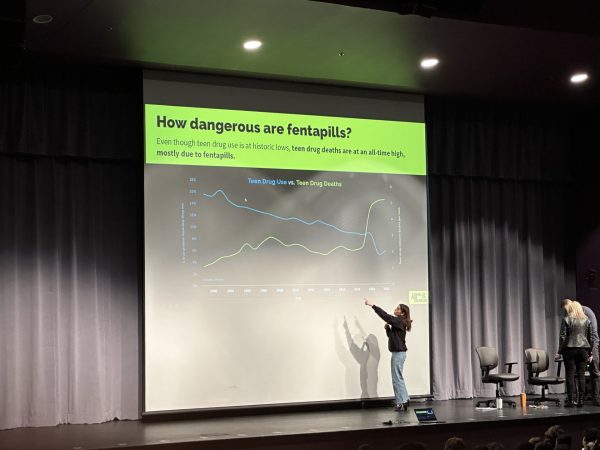
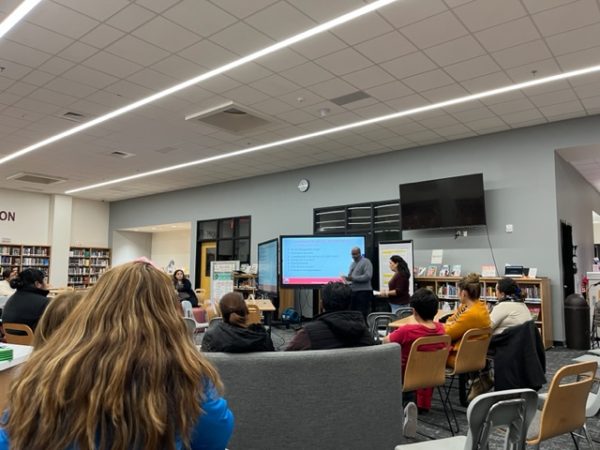
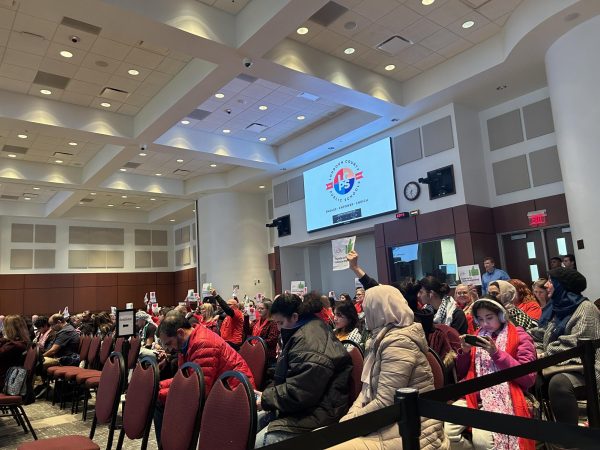
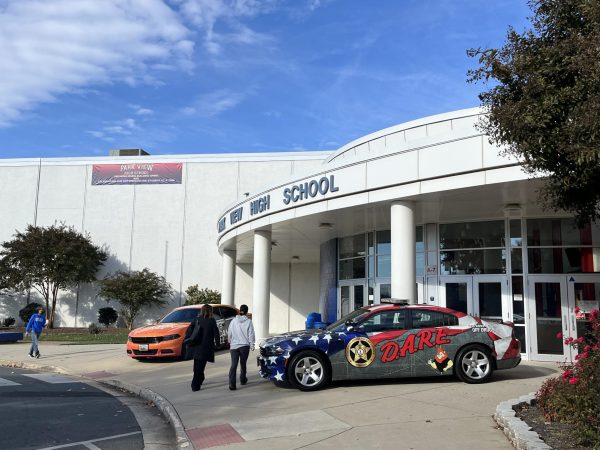


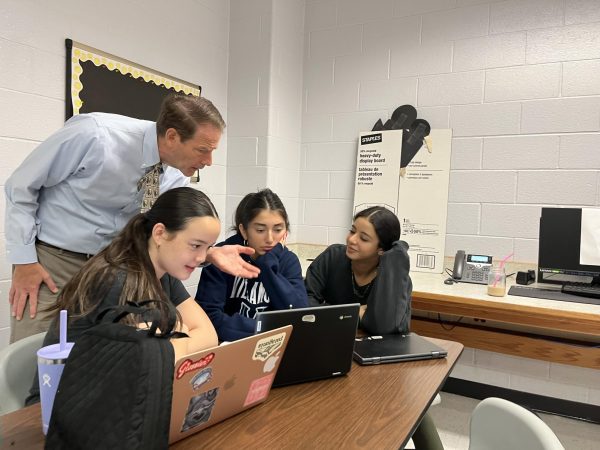
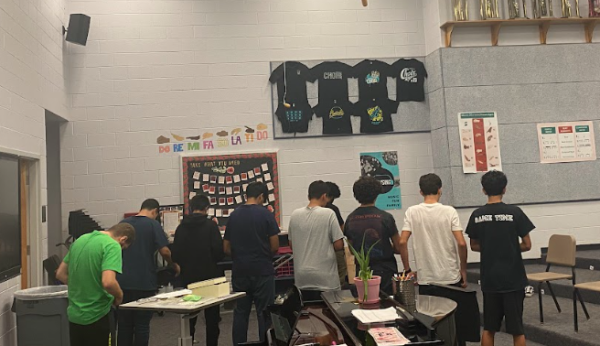


Ms. Carter • Jan 26, 2019 at 3:07 pm
I’m not really sure what the point of this article is. It written as if there is some sort of scandal because teachers are making paper copies of material being given to students. I suspect most students are grateful to get the material. You would be a good person to ask since you were given paper copies of skeleton notes when you were in my class. You even got copies of filled in notes when you were absent. Reading this article made me sad. I felt harassed and bullied about trying to do a difficult job the best I can. I spend about 10-12 hours a day, and additional time on weekends, planning, grading, teaching and yes, copying material to make sure my students are given the best opportunities to be successful. Dr. Brewer sent us an email saying that the cost of copy paper is about $13.50 per year per student. That includes all the copying the administration does for things like the Senior Packet and first day forms.
On a side note, the artificial turf on the football field cost 1.58 million dollars and it’s life expectancy is about 8 years. How much is that per student (do the math!) and do all students benefit from it?
Thomas Winston • Jan 24, 2019 at 1:48 pm
That is a great point made by #teammsk. Don’t you have to “show your work” in math for full or partial credit? No way to do that on a googlepad. Did the copy count include the administration?
Noelle Heilpern • Jan 24, 2019 at 10:54 am
Ms. Kostkan can’t help the use of so much paper, math is a subject that students need paper for. Learning math on a chromebook is almost impossible, and this is for her curriculum. #teammsk
Thomas Winston • Jan 24, 2019 at 8:33 am
Thank you for an interesting article. Did all the teachers understand the expectations noted in the article “the cost of paper and copies that the school is spending on each year will decrease.”?